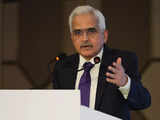Suggest a new Definition
Proposed definitions will be considered for inclusion in the Economictimes.com
What is 'Commercial bank'
Commercial Bank
As per the commercial bank definition, it is a financial institution whose purpose is to accept deposits from people and provide loans and other facilities. Commercial banks provide basic services of banking to their customers and small to medium-sized businesses.
What is Commercial bank?
A commercial bank is a financial institution that provides services like loans, certificates of deposits, savings bank accounts bank overdrafts, etc. to its customers. These institutions make money by lending loans to individuals and earning interest on loans. Various types of loans given by a commercial bank are business loans, car loans, house loans, personal loans, and education loans.
They give out these loans from the money deposited by their customers in different types of accounts. They use the deposits as capital for providing loans. Commercial banks are essential for the economy of a country because they help in creating capital, credit as well as liquidity in the market. These banks are generally physically located in cities but these days there are online banks are growing in numbers.
How commercial bank works?
Commercial banks offer basic services of banking to the public including individual customers as well as small and medium-sized businesses. Money is made by banks by charging for services and fees. The fees depend on the products given such as overdraft fees, fees for safe deposit boxes, late fees, etc. Various loans also consist of fees other than interest on loans.
Banks earn money by giving out loans and for that purpose they use funds from customer deposits. They charge higher interest rates on loans they give out and comparatively less rate of interest on the amount they get as deposits from their customers. For e.g., a bank may provide a 0.30 per cent rate of interest on savings account to its customers but charges a 4.8 per cent rate of interest annually for home loans.
Generally, commercial banks are situated in buildings where their customers come for using ATM machines and other banker window facilities. As internet technology has risen in recent years, most banks allow customers to do most services online. People can now make money transfers, deposits or make payments for bills online.
Importance of commercial banks
Commercial banks are essential for the economy because they create liquidity in the market and create capital besides providing their customers with essential services. Banks make sure liquidity in the market by lending out loans from the deposits of their customers.
What is commercial bank?
According to the commercial bank definition, it is a financial institution whose purpose is to accept deposits from customers and lend out loans.
What is commercial bank types?
Public sector banks, private sector banks, and regional rural banks are the types of commercial banks.
What is commercial bank functions?
The basic functions are accepting deposits, lending out loans, transfer of money, and discounting bills of exchange.
Why are commercial banks important?
Commercial banks are important because they help in creating liquidity in the market.
Disclaimer: This content is authored by an external agency. The views expressed here are that of the respective authors/ entities and do not represent the views of Economic Times (ET). ET does not guarantee, vouch for or endorse any of its contents nor is responsible for them in any manner whatsoever. Please take all steps necessary to ascertain that any information and content provided is correct, updated and verified. ET hereby disclaims any and all warranties, express or implied, relating to the report and any content therein.
As per the commercial bank definition, it is a financial institution whose purpose is to accept deposits from people and provide loans and other facilities. Commercial banks provide basic services of banking to their customers and small to medium-sized businesses.
What is Commercial bank?
A commercial bank is a financial institution that provides services like loans, certificates of deposits, savings bank accounts bank overdrafts, etc. to its customers. These institutions make money by lending loans to individuals and earning interest on loans. Various types of loans given by a commercial bank are business loans, car loans, house loans, personal loans, and education loans.
They give out these loans from the money deposited by their customers in different types of accounts. They use the deposits as capital for providing loans. Commercial banks are essential for the economy of a country because they help in creating capital, credit as well as liquidity in the market. These banks are generally physically located in cities but these days there are online banks are growing in numbers.
How commercial bank works?
Commercial banks offer basic services of banking to the public including individual customers as well as small and medium-sized businesses. Money is made by banks by charging for services and fees. The fees depend on the products given such as overdraft fees, fees for safe deposit boxes, late fees, etc. Various loans also consist of fees other than interest on loans.
Banks earn money by giving out loans and for that purpose they use funds from customer deposits. They charge higher interest rates on loans they give out and comparatively less rate of interest on the amount they get as deposits from their customers. For e.g., a bank may provide a 0.30 per cent rate of interest on savings account to its customers but charges a 4.8 per cent rate of interest annually for home loans.
Generally, commercial banks are situated in buildings where their customers come for using ATM machines and other banker window facilities. As internet technology has risen in recent years, most banks allow customers to do most services online. People can now make money transfers, deposits or make payments for bills online.
Importance of commercial banks
Commercial banks are essential for the economy because they create liquidity in the market and create capital besides providing their customers with essential services. Banks make sure liquidity in the market by lending out loans from the deposits of their customers.
What is commercial bank?
According to the commercial bank definition, it is a financial institution whose purpose is to accept deposits from customers and lend out loans.
What is commercial bank types?
Public sector banks, private sector banks, and regional rural banks are the types of commercial banks.
What is commercial bank functions?
The basic functions are accepting deposits, lending out loans, transfer of money, and discounting bills of exchange.
Why are commercial banks important?
Commercial banks are important because they help in creating liquidity in the market.
Disclaimer: This content is authored by an external agency. The views expressed here are that of the respective authors/ entities and do not represent the views of Economic Times (ET). ET does not guarantee, vouch for or endorse any of its contents nor is responsible for them in any manner whatsoever. Please take all steps necessary to ascertain that any information and content provided is correct, updated and verified. ET hereby disclaims any and all warranties, express or implied, relating to the report and any content therein.
Related News
 Sebi asks CRAs to verify issuers' funds availability, escrow payments in certain casesThese additional guidelines have been introduced to address scenarios of non-payment of debt (principal or interest) caused by factors beyond the issuer's control.
Sebi asks CRAs to verify issuers' funds availability, escrow payments in certain casesThese additional guidelines have been introduced to address scenarios of non-payment of debt (principal or interest) caused by factors beyond the issuer's control. Bandhan Bank Q2 Results: PAT jumps 30% to Rs 937 crore, NII up 21%Bandhan Bank reported a net profit of Rs 937 crore in Q2FY25, up 30% from Q2FY24. Net interest income stood at Rs 2,948 crore, up 21% YoY. Net Interest Margin (NIM) for the quarter was reported at 7.4% compared to 7.2% in Q2 FY24. Operating profit was reported at Rs 1,855 crore in Q2 FY25 compared to Rs 1,583 crore in Q2 FY24.
Bandhan Bank Q2 Results: PAT jumps 30% to Rs 937 crore, NII up 21%Bandhan Bank reported a net profit of Rs 937 crore in Q2FY25, up 30% from Q2FY24. Net interest income stood at Rs 2,948 crore, up 21% YoY. Net Interest Margin (NIM) for the quarter was reported at 7.4% compared to 7.2% in Q2 FY24. Operating profit was reported at Rs 1,855 crore in Q2 FY25 compared to Rs 1,583 crore in Q2 FY24. Banks struggles to mobilise large deposits; C-D ratio rises to 80 pc: ReportBanks in India faced challenges in mobilizing large deposits to meet rising credit demand over the past two financial years. Credit growth outpaced deposit growth, with a notable increase in the Credit-to-Deposit ratio. Younger investors are showing more interest in equity markets, while senior citizens hold a significant portion of term deposits.
Banks struggles to mobilise large deposits; C-D ratio rises to 80 pc: ReportBanks in India faced challenges in mobilizing large deposits to meet rising credit demand over the past two financial years. Credit growth outpaced deposit growth, with a notable increase in the Credit-to-Deposit ratio. Younger investors are showing more interest in equity markets, while senior citizens hold a significant portion of term deposits. China stocks soar in biggest single-week jump since 2008An abrupt move by China's leaders to prime the economy with stimulus has produced a powerful rally in the country's stocks, which have posted their biggest single-week gain in nearly 16 years.
China stocks soar in biggest single-week jump since 2008An abrupt move by China's leaders to prime the economy with stimulus has produced a powerful rally in the country's stocks, which have posted their biggest single-week gain in nearly 16 years. Explainer: Here are key financial ratios to evaluate performance of banksBanking and finance stocks have earned stellar returns over the past few years, thereby attracting retail investors. The sector index BSE Bankex has gained over three times since April 1, 2020, the year of pandemic, closely tracking similar gains in the benchmark Sensex.
Explainer: Here are key financial ratios to evaluate performance of banksBanking and finance stocks have earned stellar returns over the past few years, thereby attracting retail investors. The sector index BSE Bankex has gained over three times since April 1, 2020, the year of pandemic, closely tracking similar gains in the benchmark Sensex. More money may make India go round at a time when things aren't looking so brightThe economy has slowed recently, with decreased sales growth in both consumption and investment items. Key factors include an election-related slowdown in government spending, weakening exports, and a shortage of money supply. The RBI is attempting to address this issue by changing its liquidity stance.
More money may make India go round at a time when things aren't looking so brightThe economy has slowed recently, with decreased sales growth in both consumption and investment items. Key factors include an election-related slowdown in government spending, weakening exports, and a shortage of money supply. The RBI is attempting to address this issue by changing its liquidity stance. These 5 bank stocks can give 26-56% returns in 1 year, according to analystsIn sectors like banking when a regulatory rejig takes place, every player has to follow a new set of rules. It is not possible for any entity to escape the regulatory regime. This leads to a situation where entities which are large or are already following best practices are able to make transition to a new regime in a short span of time and are the first one to get rewarded on the street. Others who take time to the follow which normally are smaller or mid sized players tend to get attention later. There is a set of quasi private sector banks which have taken time to change but now that they have changed it is getting reflected in their numbers. Check out Stock Reports Plus, powered by Refinitiv, for price targets of over 4,000 listed stocks along with detailed company analysis focusing on five key components - earnings, fundamentals, relative valuation, risk and price momentum to generate standardized scores. SR+ Reports is a complimentary offering to ETPrime members.
These 5 bank stocks can give 26-56% returns in 1 year, according to analystsIn sectors like banking when a regulatory rejig takes place, every player has to follow a new set of rules. It is not possible for any entity to escape the regulatory regime. This leads to a situation where entities which are large or are already following best practices are able to make transition to a new regime in a short span of time and are the first one to get rewarded on the street. Others who take time to the follow which normally are smaller or mid sized players tend to get attention later. There is a set of quasi private sector banks which have taken time to change but now that they have changed it is getting reflected in their numbers. Check out Stock Reports Plus, powered by Refinitiv, for price targets of over 4,000 listed stocks along with detailed company analysis focusing on five key components - earnings, fundamentals, relative valuation, risk and price momentum to generate standardized scores. SR+ Reports is a complimentary offering to ETPrime members. Still some distance to cover on inflation, can’t look the other way: RBI GovernorRBI Governor Shaktikanta Das emphasized the need to address inflation, which remains above the target level of 4%. Speaking at a Bretton Woods Committee event, he highlighted concerns about global financial stability and banks' exposure to commercial real estate. He urged policymakers to adopt forward-looking regulatory measures.
Still some distance to cover on inflation, can’t look the other way: RBI GovernorRBI Governor Shaktikanta Das emphasized the need to address inflation, which remains above the target level of 4%. Speaking at a Bretton Woods Committee event, he highlighted concerns about global financial stability and banks' exposure to commercial real estate. He urged policymakers to adopt forward-looking regulatory measures. Household savings do not create deposits, only the RBI canBank deposits in India have been growing slowly, while private credit has surged. This trend is linked to a shift in savings patterns and the creation of money by banks through loans. The Reserve Bank of India's actions on reserve money also play a crucial role in influencing deposit growth.
Household savings do not create deposits, only the RBI canBank deposits in India have been growing slowly, while private credit has surged. This trend is linked to a shift in savings patterns and the creation of money by banks through loans. The Reserve Bank of India's actions on reserve money also play a crucial role in influencing deposit growth. Muthoot Microfin secures $15 million from Triple Jump, nears $35 million deal with BlueOrchardMuthoot Microfin has finalised a deal with Dutch development finance institution Triple Jump to raise $15 million in non-convertible debentures, while it is in advanced stage of discussions to raise another $35 million from Swiss impact investor BlueOrchard even as the microfinance sector is facing headwinds with symptoms of overheating visible in some pockets.
Muthoot Microfin secures $15 million from Triple Jump, nears $35 million deal with BlueOrchardMuthoot Microfin has finalised a deal with Dutch development finance institution Triple Jump to raise $15 million in non-convertible debentures, while it is in advanced stage of discussions to raise another $35 million from Swiss impact investor BlueOrchard even as the microfinance sector is facing headwinds with symptoms of overheating visible in some pockets.
Load More